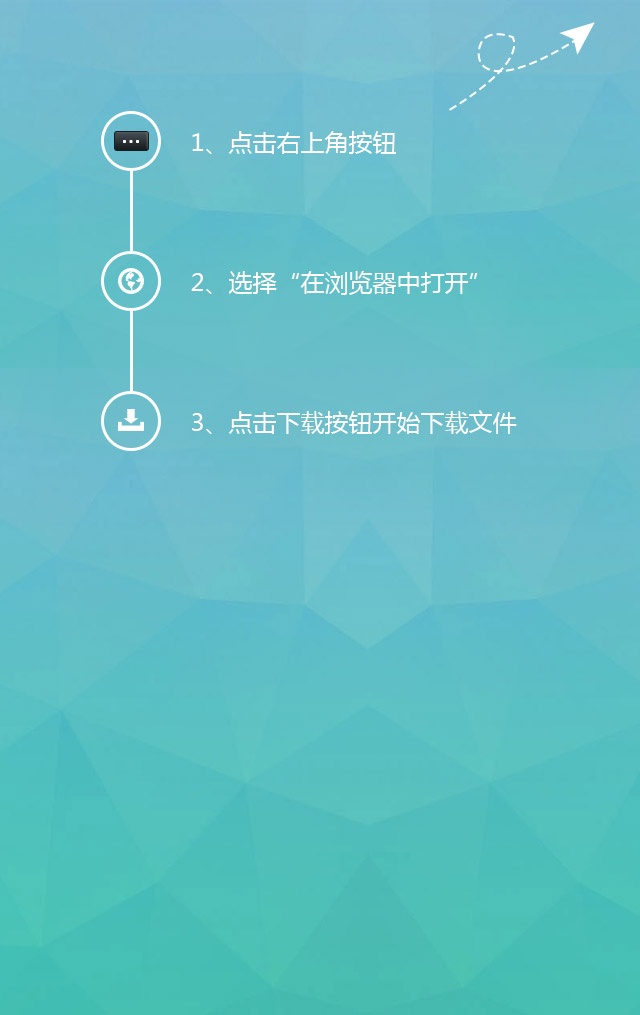华为通信电源曹泽军:AI助力5G建设
华为通信电源曹泽军:AI助力5G建设华为通信电源曹泽军:AI助力5G建设
C114讯 9月28日专稿(蒋均牧)“5G正在照进现实,带来前所未有的业务体验提升和来自使能全行业数字化的增长可能,但今天的电信行业却面临结构性问题。通过提出SoftCOM AI战略和理念,我们将AI技术应用于电信网络以打造‘自动驾驶、永不故障’的自治网络,实现运维效率、能源效率和资源效率的倍增以及用户体验的显著提升,助力运营商获取商业成功。”华为中国战略Marketing部部长曹泽军在2018通信展同期的“拥抱AI,开启信息通信智能服务时代”高峰论坛上表示,“当5G遇见AI,网络重构天然融合”。

5G时代已来
随着3GPP 5G NR独立组网(SA)标准的正式出炉,以及各国各地5G频谱的拍卖/分配,全球5G商业化已进入快车道。美国计划2018年全面实现5G商用、俄罗斯在积极探索5G共建共享合作方式、韩国平昌冬奥会成为首个实现“5G网络全覆盖”的奥运会。而我国已经明确了2020年5G确保商用的政策,最近5G技术研发试验第三阶段测试也已顺利完成,亦有消息称5G频谱资源的最终许可方案即将公布。
“可以说5G时代已经到来,而5G也会改变未来的业务形态。”曹泽军指出,5G将令移动网络迈入Giga时代,支撑极致的业务体验;超高地可靠、极低时延的通信能力,将使能无人驾驶真正走向现实;其指向的海量连接,也将为IoT领域随时随地的全在线提供保障。
4G为宽带体验、视频业务、人机互动提供了条件,使得互联网应用与人们活动紧密结合,深刻地改变了人的生活;而5G将以万物互联的模式推进所有垂直行业的深度整合,真正实现工业化和信息化的深度融合。5G将打开的,是一个面向垂直行业的、面向跨行业合作的万物互联的全新环境。
但在同时,5G“云管端”协同才能真正带来体验的提升,同时随着越来越多的应用迁移至云端,对5G业务的丰富性多样性、对技术的支撑等方面均提出了更高的要求与挑战。在此过程中,华为致力于“把数字世界带入每个人、每个家庭、每个组织,构建万物互联的智能世界”,从而普惠整个人类社会。
5G遇见AI:网络重构天然融合
在5G即将到来的今天,电信行业必须为此做好准备,但目前行业的整体态势却不容乐观,运营商普遍面临增长乏力的情况。
“过去我们存在着人口红利,运营商的增长模式以投资驱动为主,只要这里有人,把网建设过来、把语音业务开起来(或把数据业务开起来),运营商就有了收入。但到可今天,无论是语音用户还是数据用户都基本上达到了人口红利的极限,在这样的情况下,运营商的投入和产出周期(投资回报周期)由过去5-7年的延长到了更长的时间(7-10年),导致业务经营上受到了很大的压力,成为电信行业的结构性问题。”曹泽军解释道。
“另一方面,业务需求不断推动网络升级,网络架构越来越复杂、网络规模成倍增长,随之而来的能源消耗、设备消耗、频谱利用率都导致网络问题趋于复杂。”Ovum分析报告显示,过去十年电信行业的收入增长从来没有跑赢过OPEX的增长,OPEX在电信网络TCO(总体拥有成本)的占比从62%上升到75%,这意味着单纯地降低设备成本,已经不能改善运营商的成本结构。
在无线接入领域,传统网络偏重于下行速率、传统终端也主要用于下载数据,5G上行速率的空前提升将再次改变人类的通信方式,也必将引发一场终端变革。据统计,2G基站参数仅有500个、3G基站1500个、到了4G时代每个基站的参数接近3500个,5G参数将更多。华为轮值董事长徐直军也曾旗帜鲜明地提出,5G时代,能否有效遏制OPEX的持续增长成为商业成功的关键,需要把降低OPEX做为战略重心。
“当5G遇见AI,网络重构天然融合。”曹泽军阐述道,5G网络本身是一个复杂的系统,需要人工智能来理清逻辑和秩序,使能网络自动化,降低运维成本;另一方面,5G时代将自下而上地产生海量数据,AI可以从中识别、学习模式和规则,并预测趋势、执行策略——5G加AI通过海量数据不断“喂食”将产出最大价值。
“过去无论从运营、规划、维护这些方面,我们更多依靠人工的干预、领导的决策,某种意义上讲是被动的,即使发展到今天我们也只能说做到半主动,还做不到真正的自治和完全的主动。”为此,华为提出了SoftCOM AI战略。作为华为All Intelligence战略在电信领域的落地,SoftCOM AI通过将AI注入到全云化网络构架及解决方案中,力图打造一张“自动驾驶、永无故障”的网络,实现电信网络的自动、自优、自愈、自治。
拥抱AI的5G场景
AI使网络有了不断学习的机制,不断提升网络自动化的水平。华为常务董事、产品与解决方案总裁汪涛最近发布了自动驾驶网络的主张,并提出了面向自动驾驶网络演进的五级标准建议和实施准则——到了L5这一终极目标,网络系统将具备跨多业务、跨领域的全生命周期的闭环自动化能力。
“罗马不是一天建成的”,面向自动驾驶网络的演进亦需要分场景逐步推进,目前华为已经识别出一系列AI能够起到显著作用的5G场景,诸如5G网络切片自动部署和扩缩容、5G基站覆盖优化、基站载波智能关断、网络故障预测、网络健康度分析等。
不同的业务对网络功能有不同的需求,如实时的视频、语音对于时延有明确的要求,对于丢包的敏感性相对宽松;智能水表、电表类的物联网业务要求数据传输的可靠性,对于时延要求宽松。为了在同一个网络中同时满足各种业务的多样需求,5G网络中引入了网络切片——网络切片是一个逻辑概念,即把具有相同的网络需求的业务划入一个切片,不同的网络切片逻辑上彼此独立、物理上共享相同的网络资源。
传统的网络规划会先预估各类业务的需求来构建话务模型,然后配置对应切片的资源预留。而融入了AI的华为无线大数据平台通过监控网络切片的实际运行情况、基于全量的业务数据,可分析出各类用户、业务的资源使用特性,对切片中的业务进行精细的建模,利用机器学习的算法判断资源需求的趋势分析,从而与网络设备形成正反馈,优化资源分配策略:“为了实现设备的控制与大数据平台直接的反馈、控制循环,需要增加网元与平台的控制面接口,即平台可以将通过数据收集分析的结果反馈至网元,网元进一步来实现实时的控制策略更新。”
同时,目前5G厂商均处于实现基于3GPP协议要求的基本功能特性的阶段,主要精力投在特性竞争力上(比如速率比拼),在网络维护能力构建尤其是自愈自恢复等自动化运维能力上考虑不足。从全球站点部署节奏看,5G元年将达到4G发展三年的规模,大量的网络改造对现网存量稳定运行也将带来挑战。
5G当前主要用例为FMA/WTTx,除MBB外,还将涉及AR/VR,车联网+无人驾驶、低空覆盖等多种业务,不同业务类型对网络的规划方法不同,AI可使能网络参数自动调整,实现真正精准网优:“在AI训练阶段,通过对全球现网数据的采集、分析、整理和标注,运用算法来构建的全局经验模型库,可形成基站天线调整的初始输入参数,并根据实际情况调节天线参数。通过持续的迭代优化,就能极大缩短漫长的调试阶段,快速得到某个地点某种业务场景下的波束的最优配置参数。”
“预测性是AI的核心价值。”基站载波智能关断方面,基于网络运行数据和AI使能的模型训练,可提前预测网络流量的峰谷,从而实现通过调节无线载频的关断来实现站点能耗与流量峰谷一致。网络故障预测方面,电信网络的管理和控制中心基于设备的南向接口和数据采集,通过一定的策略和规则,可对未来故障进行预测,从而实现故障发生前规避故障、质量劣化前优化质量、网络拥塞前调整流量。
运营商价值:三个倍增
5G加AI将能够给客户提供永远最优的网络连接和永不断网的可获得性,对运营商的价值则是“三个倍增”,即运维效率倍增、资源效率倍增和能耗效率倍增。
曹泽军剖析道,5G加AI实现了网络的预测性维护,即能够预测某个设备未来有多大概率发生故障,然后进行针对性的维护。华为希望能将电信网络的告警压缩和故障定位减少90%,实现90%关键器件的失效和劣化预测,进一步达到网络自愈;此外,网络故障中超过70%的问题源自无源设备,例如光纤弯曲、器件老化、接口松动等,在这一过程中,信号都会发生变化,通过引入AI学习这些变化的特征,就有可能提前进行预测,用有源解决无源的故障问题。
基于流量走向来调度网络,资源利用率就会大幅提升。现在的网络并不具备这样的能力,只有通过引入AI、建好流量预测模型,才能实现精准流量预测和最合理的网络拓扑,以流量的方向而不是物理连接来决定网络的路径,最终大幅提高网络的资源效率。
“比特决定瓦特”,即网络流量大小决定能耗多少。在机房或者站点,每个系统都有数十个参数,通过AI训练生成散热与环境及业务负荷模型,将使得日照、温度和配套设施油机、太阳能和电池等达到最佳能效;在设备层面,根据业务负载进行动态能量投放,没有流量时就利用时隙关断、RF深度休眠、载频关断等减少耗电量,同时实现数据中心对象如服务器组件的动态节能管理;在网络系统层面,构建准确的业务负荷预测模型,将使能整网流量最优,从而达到能耗效率最佳。
华为通信电源,华为电源官网,华为高频开关电源,华为-48v开关电源,华为开关电源模块,华为网络机柜,华为服务器机柜,华为室外一体化机柜,华为OLT电源,华为直流电源,华为开关电源,华为综合柜,华为UPS,UPS5000-E,UPS2000-A,UPS2000-G,UPS8000-D,UPS5000-A,华为TP48200,华为TP48300,华为TP48600 华为通信电源曹泽军:AI助力5G建设
HUAWEI communications power Cao Zejun: AI helps 5G build HUAWEI communication power supply Cao Zejun: AI helps 5G construction
C114 News September 28 (Jiang Junmu) "5G is coming into reality, bringing unprecedented business experience upgrade and the possibility of growth from enabling the whole industry to digitize, but today's telecommunications industry is facing structural problems. By proposing the SoftCOM AI strategy and concepts, we apply AI technology to telecommunications networks to create a "self-driving, never-failing" autonomous network, to achieve operational and maintenance efficiency, energy efficiency and resource efficiency, as well as a significant increase in user experience, to help operators achieve business success. "When 5G meets AI, network reconfiguration will merge naturally," Cao Zejun, Minister of Strategic Marketing of Huawei China, said at the "Embrace AI, Open the Age of Intelligent Information and Communication Services" Summit Forum during the same period of the 2018 Communication Exhibition.
5G era has come
With the formal launch of 3GPP 5G NR stand-alone networking (SA) standard and the auctioning/allocation of 5G spectrum in various countries, the global 5G commercialization has entered the fast lane. The United States plans to fully realize the 5G commercial in 2018, Russia is actively exploring the 5G co-construction and sharing of cooperation, Korea's Pingchang Winter Olympics as the first to achieve "5G network full coverage" of the Olympic Games. China has made clear the policy of ensuring commercial use of 5G in 2020, and recently the third phase of 5G technology R&D test has been successfully completed. It is also reported that the final License scheme of 5G spectrum resources will be announced soon.
"It can be said that the 5G era has arrived, and 5G will change the future business form." Cao Zejun pointed out that 5G will enable mobile networks to enter the Giga era, supporting the ultimate business experience; ultra-high reliability, ultra-low latency communication capabilities, will enable unmanned driving to truly become a reality; its massive connection will also provide support for the IoT field anytime, anywhere online.
4G provides the conditions for broadband experience, video services, human-computer interaction, making the Internet applications and people's activities closely integrated, profoundly changing people's lives; and 5G will promote the deep integration of all vertical industries in the mode of interconnection of all things, and truly realize the deep integration of industrialization and informatization. 5G will open up a new environment for the interconnection of all things in vertical industries and cross-industry cooperation.
But at the same time, 5G "cloud tube" collaboration can really bring about the improvement of experience, and as more and more applications migrate to the cloud, the diversity of 5G services, technical support and other aspects are put forward higher requirements and challenges. In the process, Huawei is committed to "bringing the digital world into everyone, every family, every organization, and building an intelligent world in which everything is interconnected", thus benefiting the entire human society.
5G meets AI: natural integration of network reconstruction
Today, the telecommunications industry must be ready for this, but the overall situation of the industry is not optimistic, operators are generally facing a situation of weak growth.
"In the past, we had a demographic dividend, and the growth pattern of operators was investment-driven. As long as there were people here who built the network, started voice services (or started data services), operators would have income. But today, both voice and data users have basically reached the limit of the demographic dividend. Under such circumstances, the input and output cycles (return on investment cycles) of operators have been extended from the past 5-7 years to a longer period (7-10 years), resulting in great pressure on business operations and become Structural problems in the telecommunications industry. " Cao Zejun explained.
"On the other hand, business needs continue to drive network upgrades, network architecture is becoming more and more complex, network scale is multiplying, and the resulting energy consumption, equipment consumption, spectrum utilization have led to network problems become more complex." The Ovum analysis shows that the telecom industry has never outperformed OPEX in terms of revenue growth over the past decade, and OPEX's share of TCO (total cost of ownership) in the telecom network has risen from 62% to 75%, which means that simply reducing equipment costs can no longer improve the cost structure of operators.
In the field of wireless access, traditional networks focus on downlink rate, and traditional terminals are mainly used to download data. The unprecedented increase of 5G upstream rate will once again change the way of human communication, and will also trigger a terminal change. According to statistics, there are only 500 2G base station parameters, 1500 3G base stations, and nearly 3500 parameters for each base station in the era of 4G. There will be more 5G parameters. Xu Zhijun, Huawei's rotating chairman, also pointed out sharply that in the 5G era, whether the sustained growth of OPEX can be effectively curbed has become the key to commercial success, and the reduction of OPEX needs to be the strategic focus.
"When 5G meets AI, the network reconstructs natural integration." Cao Zejun explained that 5G network itself is a complex system, requiring artificial intelligence to clarify logic and order, enable network automation, reduce operation and maintenance costs; on the other hand, the 5G era will produce a huge amount of data from the bottom up, from which AI can identify, learn patterns and rules, and predict trends, implementation strategies - 5G Adding AI to feed through massive data will yield maximum value.
"In the past, we relied more on human intervention and leadership in decision-making in terms of operation, planning and maintenance. In a sense, it was passive. Even today, we can only say that we were semi-active, but we still can not achieve real autonomy and complete initiative." For this reason, HUAWEI put forward the strategy of SoftCOM AI. As the landing of Huawei All Intelligence strategy in telecommunications, SoftCOM AI injects AI into all-cloud network architecture and Solutions
推荐
-

-

QQ空间
-

新浪微博
-

人人网
-

豆瓣

